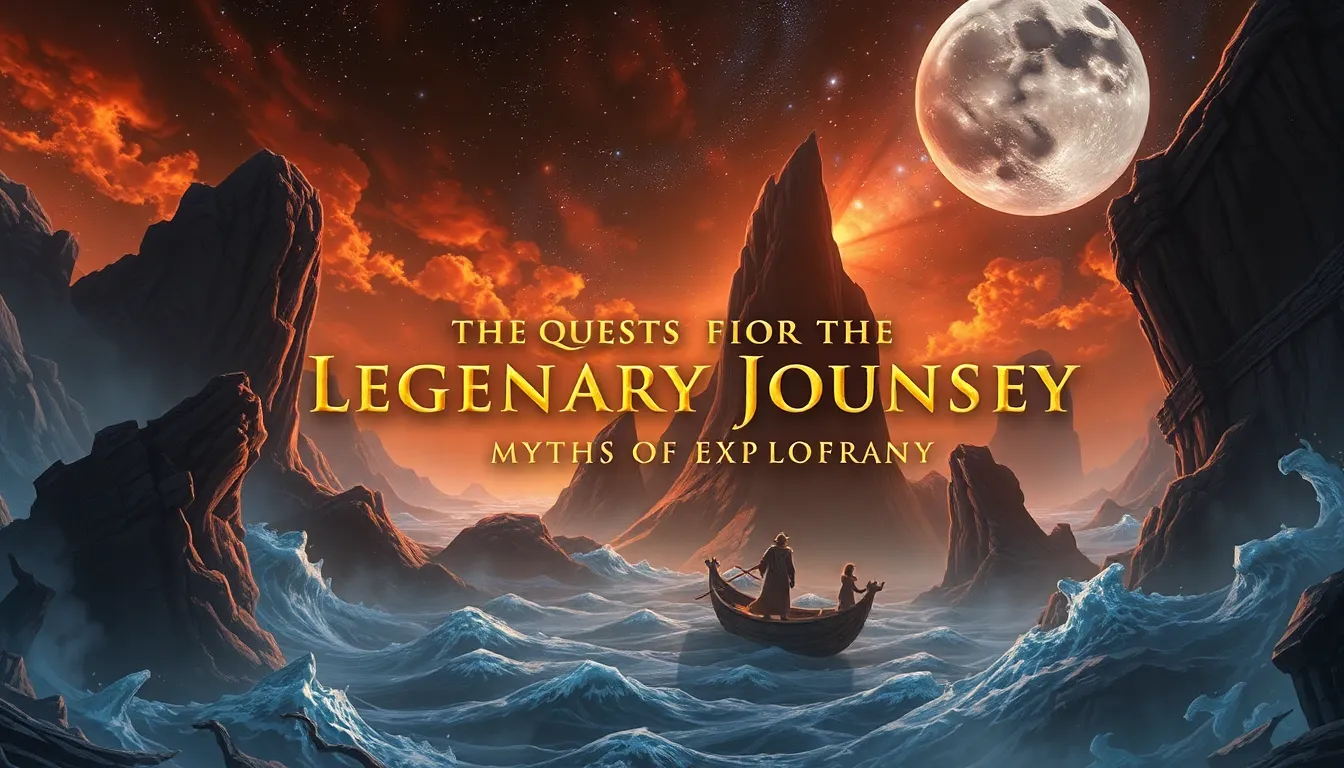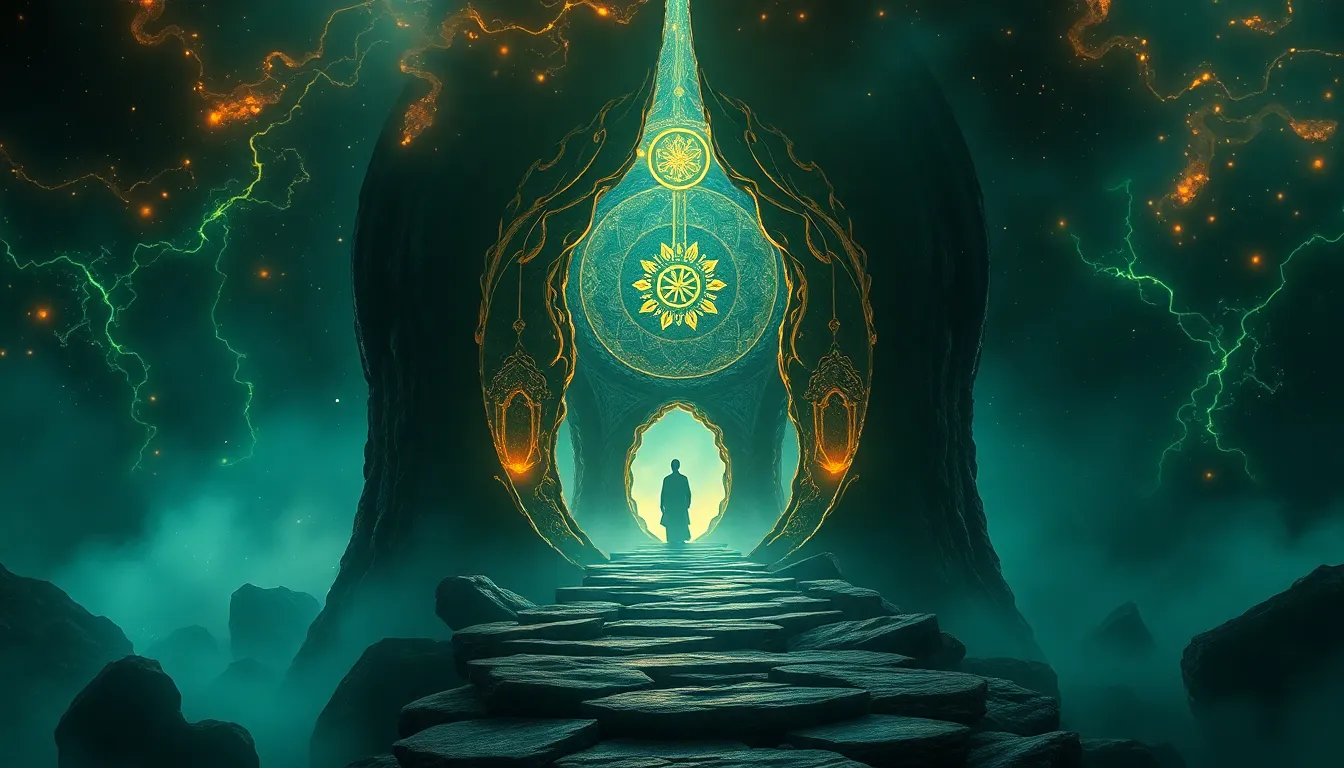The Quest for the Legendary Journey: Myths of Exploration
I. Introduction
Exploration has been a defining characteristic of humanity, a testament to our inherent curiosity and desire to understand the unknown. The term “myths of exploration” refers to the stories, legends, and narratives that have emerged around the figures and events of exploration, often blending fact with fiction. These myths serve not only as entertainment but also as cultural touchstones that reflect our values and aspirations. This article delves into the fascinating realm of legendary journeys, exploring the origins of exploration myths, their geographical inspirations, and the psychological underpinnings that drive us to explore.
II. The Origins of Exploration Myths
Human curiosity is one of the earliest instincts that propelled our ancestors to explore beyond their immediate surroundings. From the very beginning, the urge to discover new lands and resources has been a vital part of our evolution.
In ancient civilizations, myths held significant cultural importance, often serving to explain natural phenomena or human experiences. Many of these myths are directly tied to exploration:
- Odysseus: The Greek hero of Homer’s “The Odyssey,” whose ten-year journey home from the Trojan War is filled with mythical creatures and divine interventions.
- Jason and the Argonauts: Their quest for the Golden Fleece represents the archetype of the heroic journey and the pursuit of glory.
III. The Role of Geography in Shaping Exploration Myths
Geographical features have long inspired tales of adventure and exploration. The allure of the unknown, whether it be vast oceans, uncharted forests, or towering mountains, has led to the creation of many legendary journeys.
Some examples of famous locations associated with legendary explorations include:
- Atlantis: A mythical island mentioned by Plato that symbolizes an advanced civilization lost to the sea.
- El Dorado: The fabled city of gold that countless explorers sought, representing both greed and the quest for the unattainable.
The myth-making process is often fueled by the mystery surrounding these locations, as explorers weave tales of their adventures into the cultural fabric of society.
IV. Legendary Explorers: Real vs. Mythical
Throughout history, many explorers have become larger-than-life figures, their stories evolving into myths over time. Notable figures include:
- Marco Polo: His travels to Asia and the tales of exotic lands and riches became legendary, often exaggerated by storytellers.
- Christopher Columbus: Celebrated for his voyages to the Americas, his legacy is a blend of discovery and controversy.
The transformation of these explorers into mythological figures illustrates how the blending of fact and fiction can elevate their adventures into enduring legends.
V. The Influence of Literature and Art on Exploration Myths
Literature has played a crucial role in immortalizing exploration myths. Classic works such as:
- “Moby Dick” by Herman Melville, which explores the depths of obsession and the human condition through the lens of whaling.
- “The Odyssey” by Homer, which chronicles the trials of Odysseus and his quest to return home.
Additionally, visual arts have depicted legendary journeys, from paintings of explorers setting sail to sculptures celebrating their achievements. Contemporary media continues to reinterpret exploration myths, often reflecting modern concerns and aspirations.
VI. The Psychological Aspect of the Quest
The archetype of the hero’s journey is prevalent in exploration myths, representing the trials and tribulations faced by those who seek adventure. This journey is not just a physical one but also a metaphor for personal growth and discovery.
Exploration taps into the human psyche by:
- Offering a sense of purpose and direction.
- Encouraging self-discovery through challenges.
- Providing an escape from the mundane and a taste of the extraordinary.
The allure of the unknown continues to captivate our imaginations, motivating us to venture into new territories, both literal and metaphorical.
VII. The Myth of the “Final Frontier”
Historically, the quest for the last unexplored regions has driven explorers to the farthest corners of the Earth. The notion of a “final frontier” has evolved over time, transitioning from terrestrial exploration to space exploration.
Space exploration has birthed its own set of myths, such as the idea of colonizing Mars or finding extraterrestrial life. These narratives draw parallels with Earth exploration myths, tapping into humanity’s relentless desire to conquer the unknown.
VIII. Modern-Day Explorers and Their Myths
Today, modern explorers and adventurers continue to create myths around their expeditions. Figures such as:
- Bear Grylls: Known for his survival skills and adventurous spirit.
- James Cameron: His deep-sea explorations have captured the public’s imagination.
Social media plays a significant role in shaping and spreading these legends, allowing explorers to share their journeys in real-time and engage with audiences worldwide.
IX. The Legacy of Exploration Myths
Exploration myths continue to influence modern culture and society in various ways. They inspire:
- Tourism, drawing adventurers to legendary locations.
- Adventure-seeking, as people yearn for their own epic journeys.
- Lessons learned from legendary journeys, emphasizing resilience, curiosity, and the quest for knowledge.
These myths remind us of our shared history and the enduring spirit of exploration that defines humanity.



